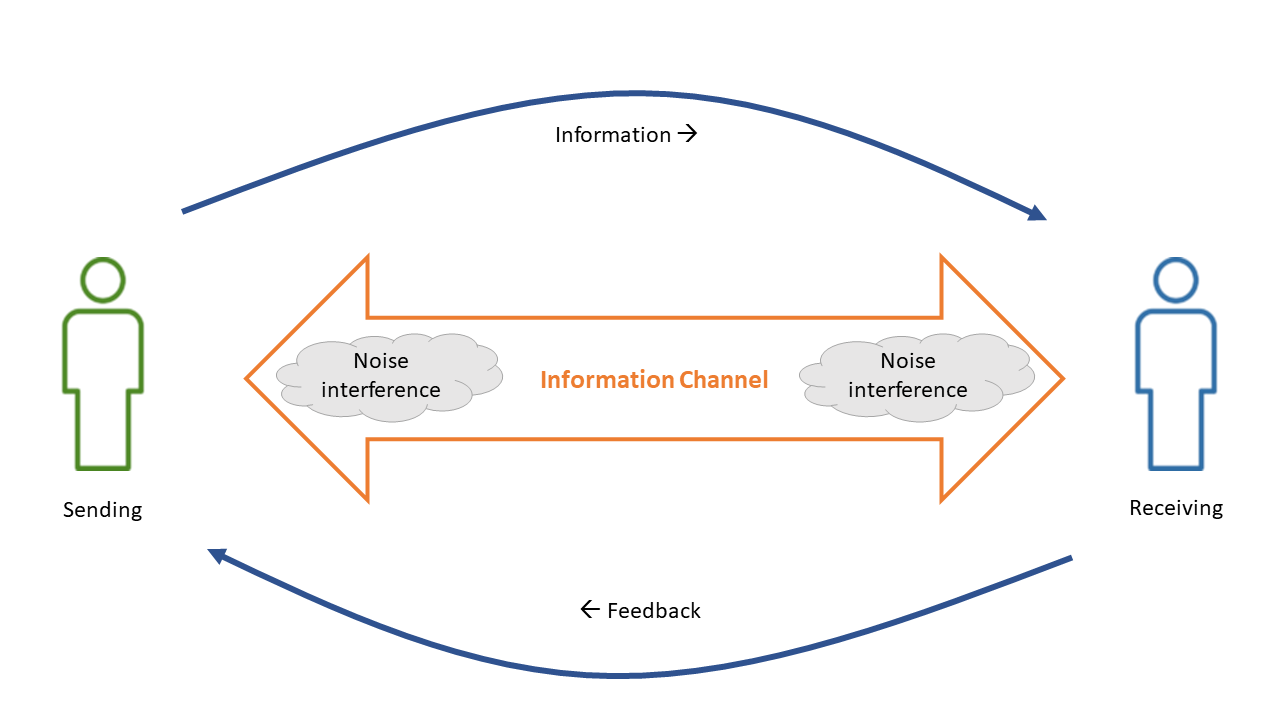Communication in project management involves the exchange of information between all project participants. Communication is a key function in project work. Effective and goal-oriented communication are the basic requirements for the successful completion of a project. Communication as a cornerstone in successful projects.

A widely used communication model is the sender-receiver model (after W. Weaver/C. E. Shannon: The Mathematical Theory of Communication, Illinois 1949).
In project management, three main areas of communication can be distinguished:
- Internal information exchange (where the coordination processes and meetings are carried out, the decisions are made)
- Information management (all project participants can ask for all information relevant to the project)
- Project marketing (presentation and presentation of the project to the stakeholders (staff, clients, future users, etc.).
In European (Erasmus+ projects) the partners live in different countries and speak different languages. Therefore, it Is absolutely necessary to decide on a common language – in most cases this will be English.
Communication management
In project management, a communication plan is an outline of how and who will communicate essential ongoing project information to key stakeholders. Your communication plan will help your team understand who should receive what updates and in which cases project stakeholders will be notified. The answers to the four given questions are the cornerstones of the communication plan:
- Which communication channels do we use (and what are the individual channels used for)?
Possible answer: A mailing list (for all stakeholders), a communication platform (for example slack.com), WhatsApp steering group, … - When should we communicate face-to-face and when asynchronously?
Possible answers: Urgent issues that need an immediate answer will always be face-to-face. - What are the project roles? Who is the project manager? Who is on the project team? Who are the project stakeholders?
The answers to these questions decide who will start the communication, and when will be people addressed with which information, and who must answer in which cases. - How are important project details (for example, status updates) communicated, and how often are they shared?
Possible answers: The responsible people give monitoring feedback in context with the existing milestones.
Here is an overview of the classic communication channels:
- Face-to-face.
Since COVID-19 projects use ZOOM or similar tools for this kind of communication. - Telephone. Telephone support is already standard in many companies.
- Website
- Messenger (WhatsApp, Facebook, Telegram)
- Social Media

Face-to-Face Communication: Common tools are Skype, ZOOM, Cisco, Teams, and others
Why is well-structured communication so important in a project?
Graham Colborne, member of the PMI Global Executive Council
Team collaboration is not an effortless process that happens by itself – it is a skill that you and your team need to build – and this task always means hard work for the project manager! An essential part of this process is to establish your team’s communication channels for more effective team collaboration.
Clear communication means sending the right message at the right time. Enable seamless collaboration and ensure that all team members receive information at the right time – so your team spends less time communicating about work around work and more on what really matters.
